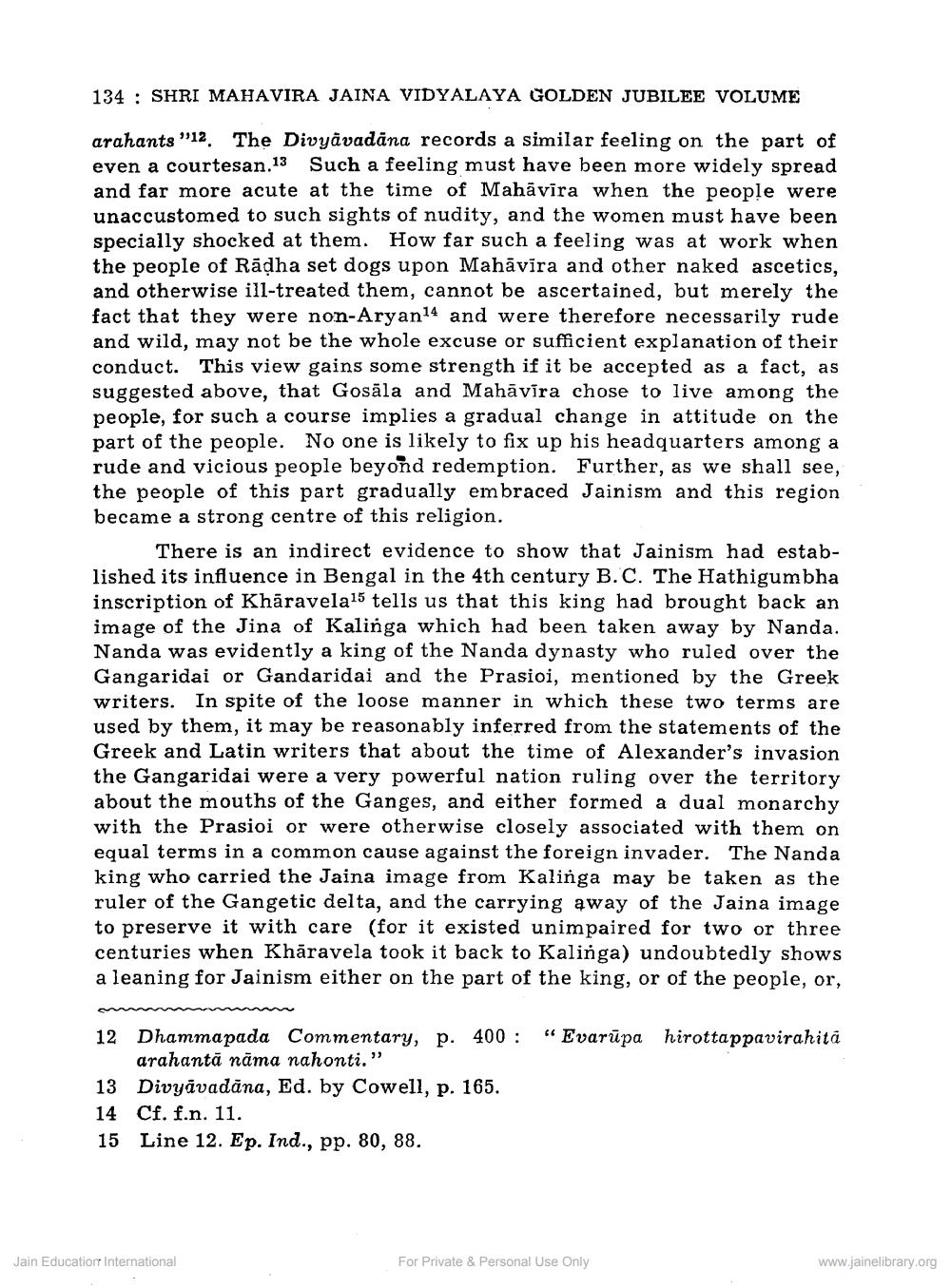Book Title: Jainaism in Ancient Bengal Author(s): R C Majumdar Publisher: Z_Mahavir_Jain_Vidyalay_Suvarna_Mahotsav_Granth_Part_1_012002.pdf and Mahavir_Jain_Vidyalay_Suvarna_ View full book textPage 5
________________ 134 : SHRI MAHAVIRA JAINA VIDYALAYA GOLDEN JUBILEE VOLUME arahants "12. The Divyāvadāna records a similar feeling on the part of even a courtesan.13 Such a feeling must have been more widely spread and far more acute at the time of Mahavira when the people were unaccustomed to such sights of nudity, and the women must have been specially shocked at them. How far such a feeling was at work when the people of Rādha set dogs upon Mahavira and other naked ascetics, and otherwise ill-treated them, cannot be ascertained, but merely the fact that they were non-Aryan14 and were therefore necessarily rude and wild, may not be the whole excuse or sufficient explanation of their conduct. This view gains some strength if it be accepted as a fact, as suggested above, that Gosāla and Mahāvīra chose to live among the people, for such a course implies a gradual change in attitude on the part of the people. No one is likely to fix up his headquarters among a rude and vicious people beyond redemption. Further, as we shall see, the people of this part gradually embraced Jainism and this region became a strong centre of this religion. There is an indirect evidence to show that Jainism had established its influence in Bengal in the 4th century B.C. The Hathigumbha inscription of Khāravela15 tells us that this king had brought back an image of the Jina of Kalinga which had been taken away by Nanda. Nanda was evidently a king of the Nanda dynasty who ruled over the Gangaridai or Gandaridai and the Prasioi, mentioned by the Greek writers. In spite of the loose manner in which these two terms are used by them, it may be reasonably inferred from the statements of the Greek and Latin writers that about the time of Alexander's invasion the Gangaridai were a very powerful nation ruling over the territory about the mouths of the Ganges, and either formed a dual monarchy with the Prasioi or were otherwise closely associated with them on equal terms in a common cause against the foreign invader. The Nanda king who carried the Jaina image from Kalinga may be taken as the ruler of the Gangetic delta, and the carrying away of the Jaina image to preserve it with care (for it existed unimpaired for two or three centuries when Khāravela took it back to Kalinga) undoubtedly shows a leaning for Jainism either on the part of the king, or of the people, or, 12 Dhammapada Commentary, p. 400: “Evarūpa hirottappavirahita arahantā nāma nahonti." 13 Divyāvadāna, Ed. by Cowell, p. 165. 14 Cf. f.n. 11. 15 Line 12. Ep. Ind., pp. 80, 88. Jain Education International For Private & Personal Use Only www.jainelibrary.orgPage Navigation
1 ... 3 4 5 6 7 8 9
